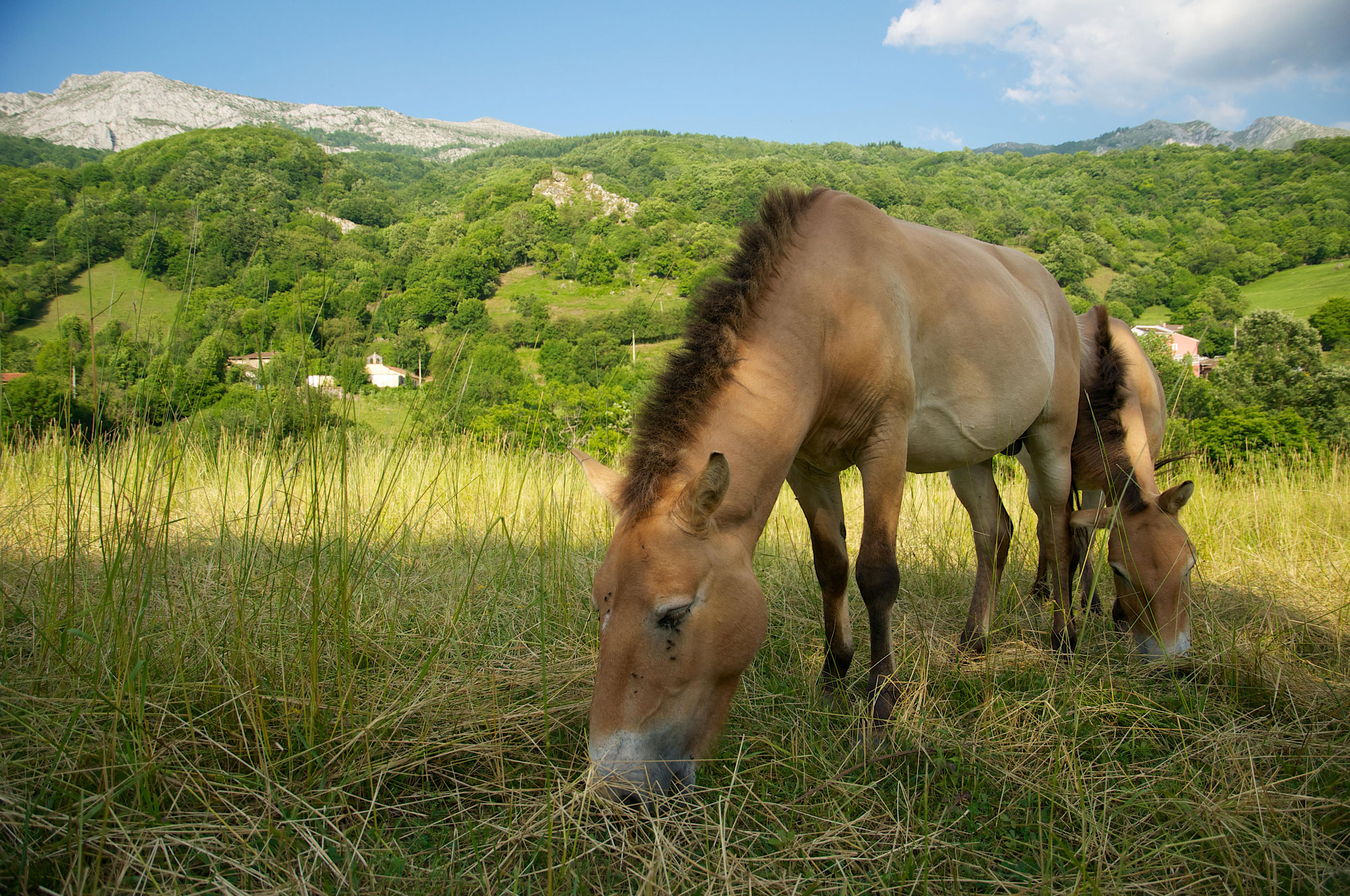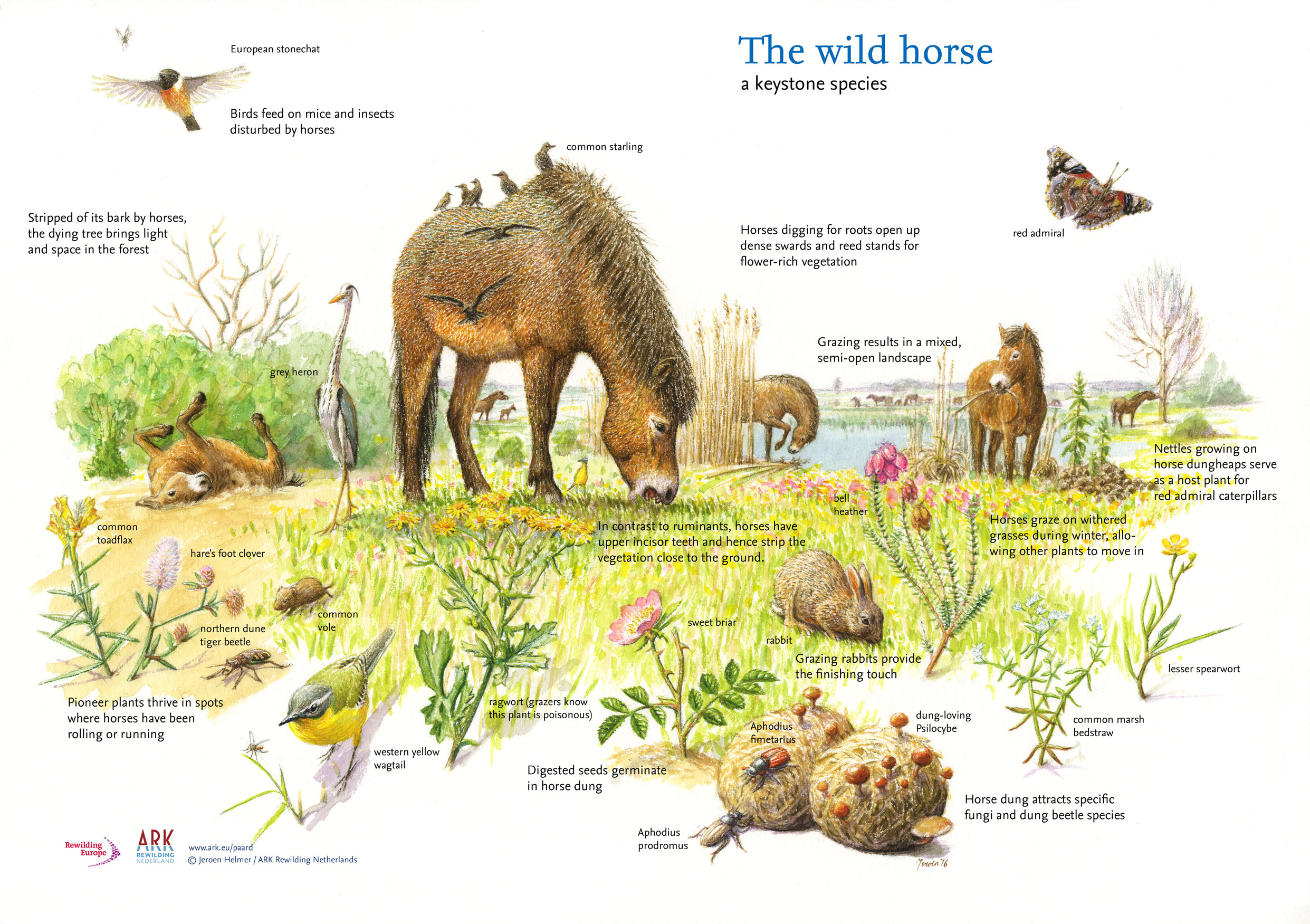Rewilding area
Przewalski’s horses, the last wild horses in the world
The Przewalski’s horses are considered the last remaining wild horses in the world and were on the verge of extinction in the mid-20th century. Their current status is critical and it is estimated that only about 2,000 specimens remain.
Unlike most of their domestic counterparts, Przewalski’s horses have a convex nose. They are small in size, with proportionally shorter legs, massive build, long tail and larger head compared to the rest of the body. The coat is short but strong, yellowish to dark brown, white on the muzzle and darker or black on the mane (always erect) and tail. Adults are about two metres long and weigh about 350 kg. Typical features of wild species can be observed in these horses, such as the dark stripes at the base of the legs, which can be seen in cave paintings when characterising wild horses.
The Przewalski’s horses are social animals that live in herds made up of a dominant male, several females and offspring under two years old. From that age, they leave the group: the males will try to make their own herd, while the females will settle in different groups, thus ensuring genetic exchange.
Villanueva de Alcorón, a unique experience in Western Europe
Villanueva de Alcorón mountains have become the only place in Western Europe where Przewalski’s horses live in total freedom, which represents a unique opportunity to observe them, as well as a valuable resource for nature tourism and environmental education. In addition, given the critical status of the species, its presence here is an outstanding contribution to the conservation of this species.
The importance of natural grazing for rewilding
Natural grazing by large herbivores such as Przewalski’s horses is essential in the restoration of healthy ecosystems. With their feeding and trampling, these horses carry out an ecologically essential task: they reduce forest biomass available in the area, where extensive livestock farming with horses and cows has long since disappeared. They also improve the diversity and quality of pastures, which benefits other wildlife species such as deer, roe deer and fallow deer, as well as domestic sheep and goats living in the area.
This action is part of the Iberian Highlands rewilding initiative, which is being carried out by Rewilding Spain. Rewilding aims to recover the lost ecological processes in ecosystems, so that nature can recover its balance and lead its own way as it has done for thousands of years. Actions such as this help to have more heterogeneous landscapes with greater biodiversity, and also contribute to rural development.
Precautions
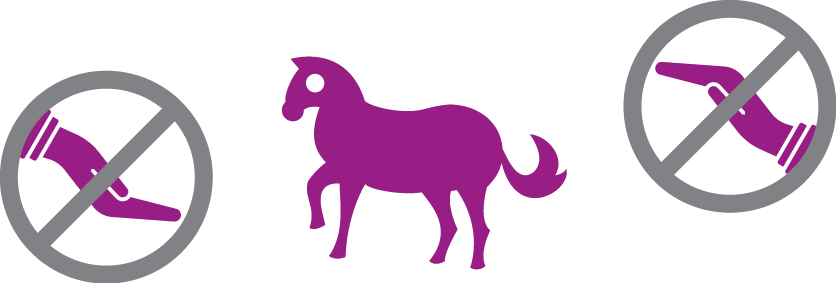
Do not touch or feed the animals
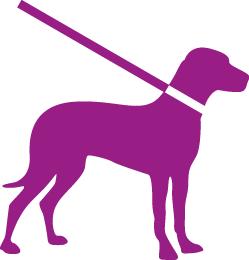
Keep your dog on a leash
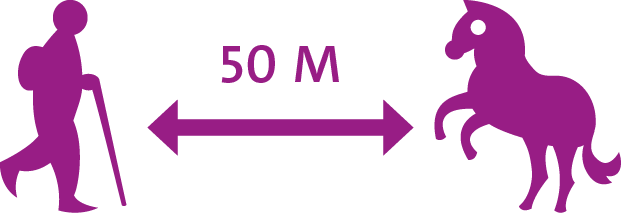
Maintain a minimum distance of 50 meters
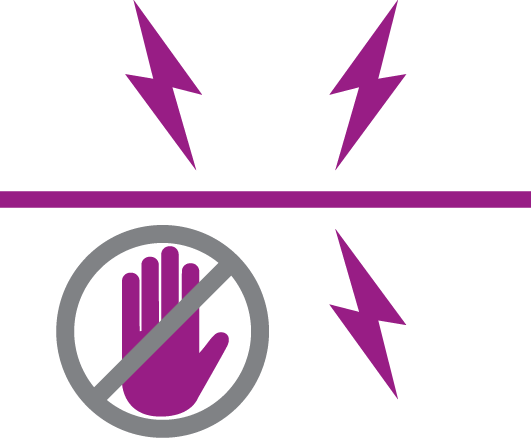
Danger, do not touch or pass the barriers
